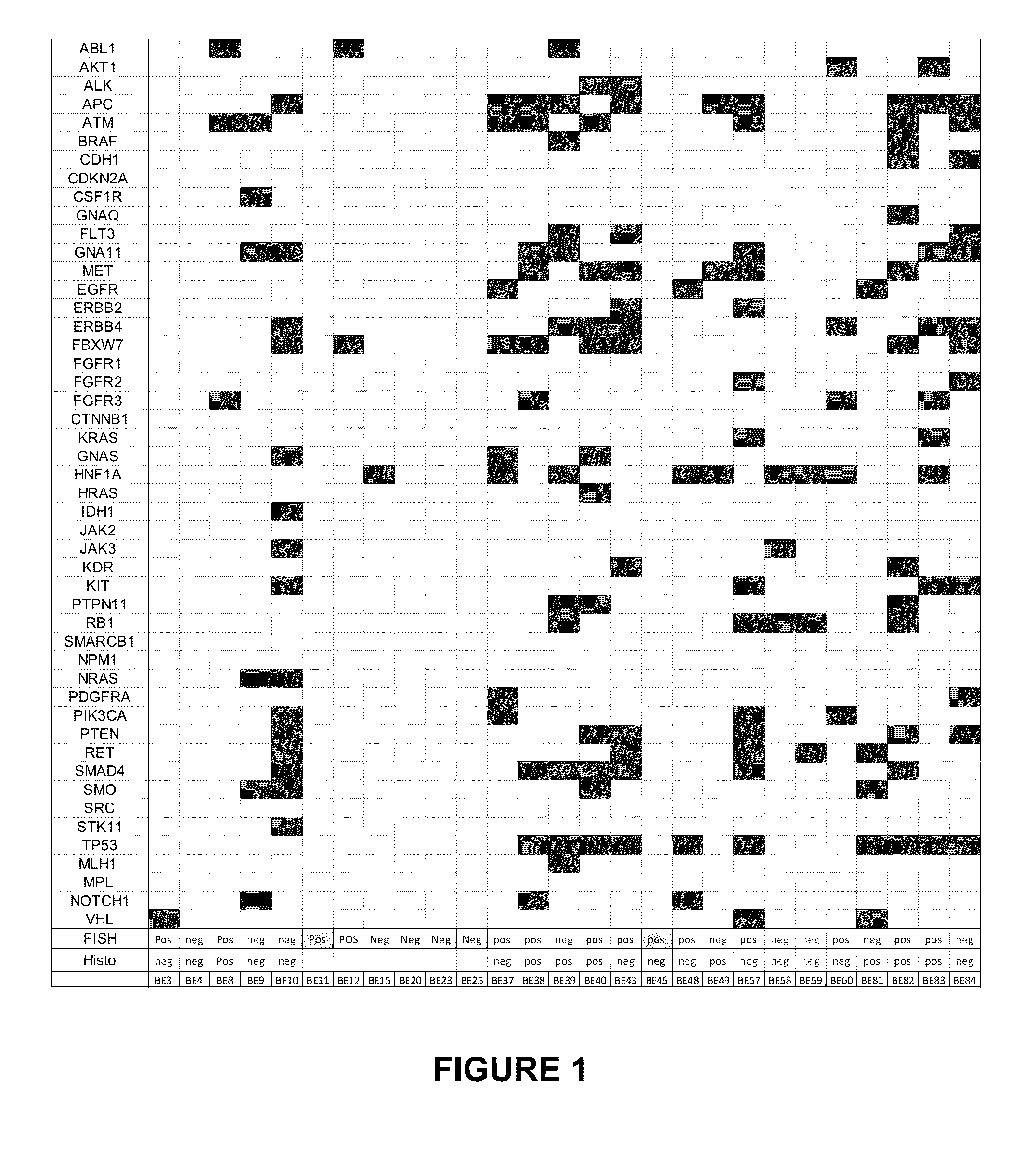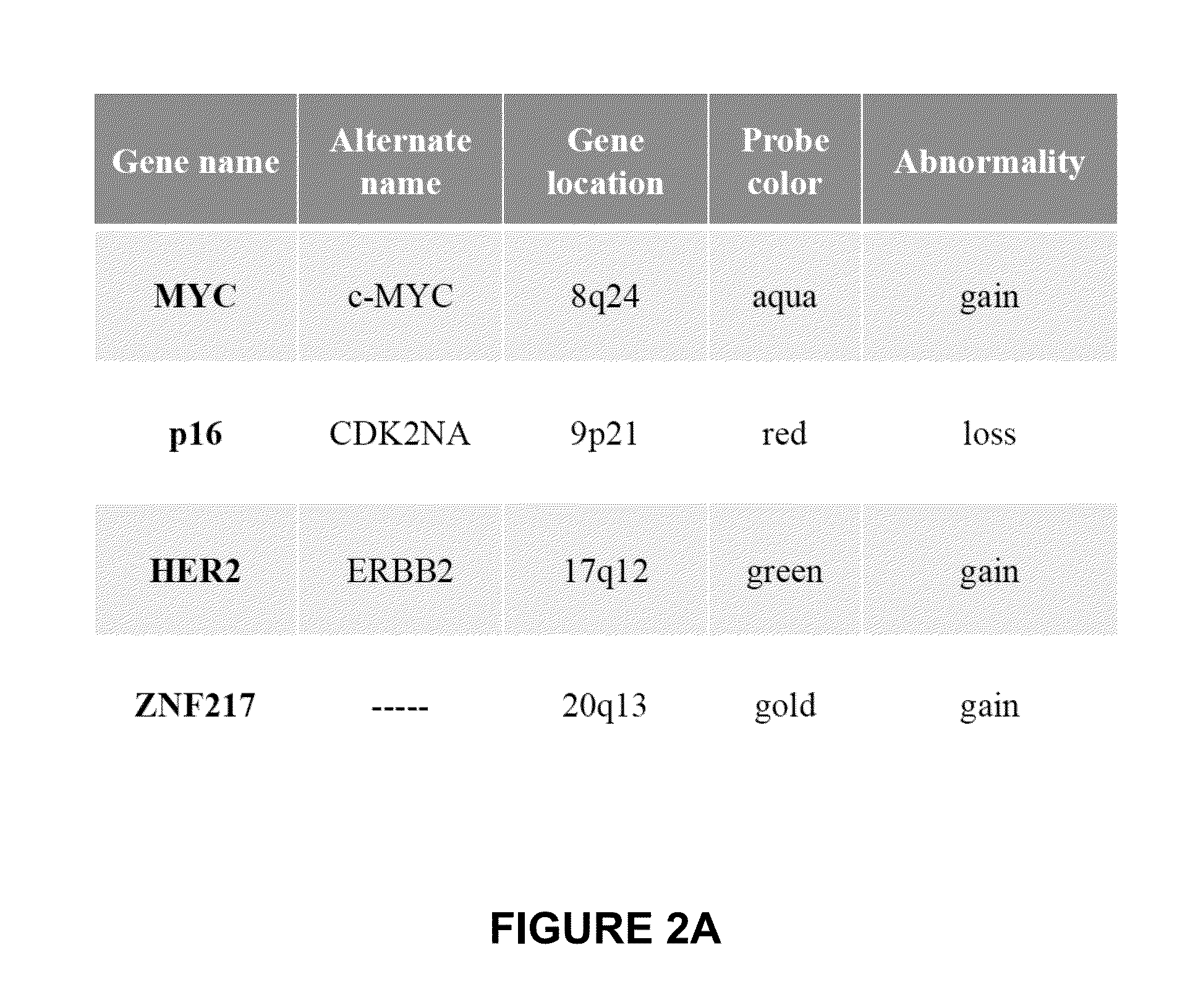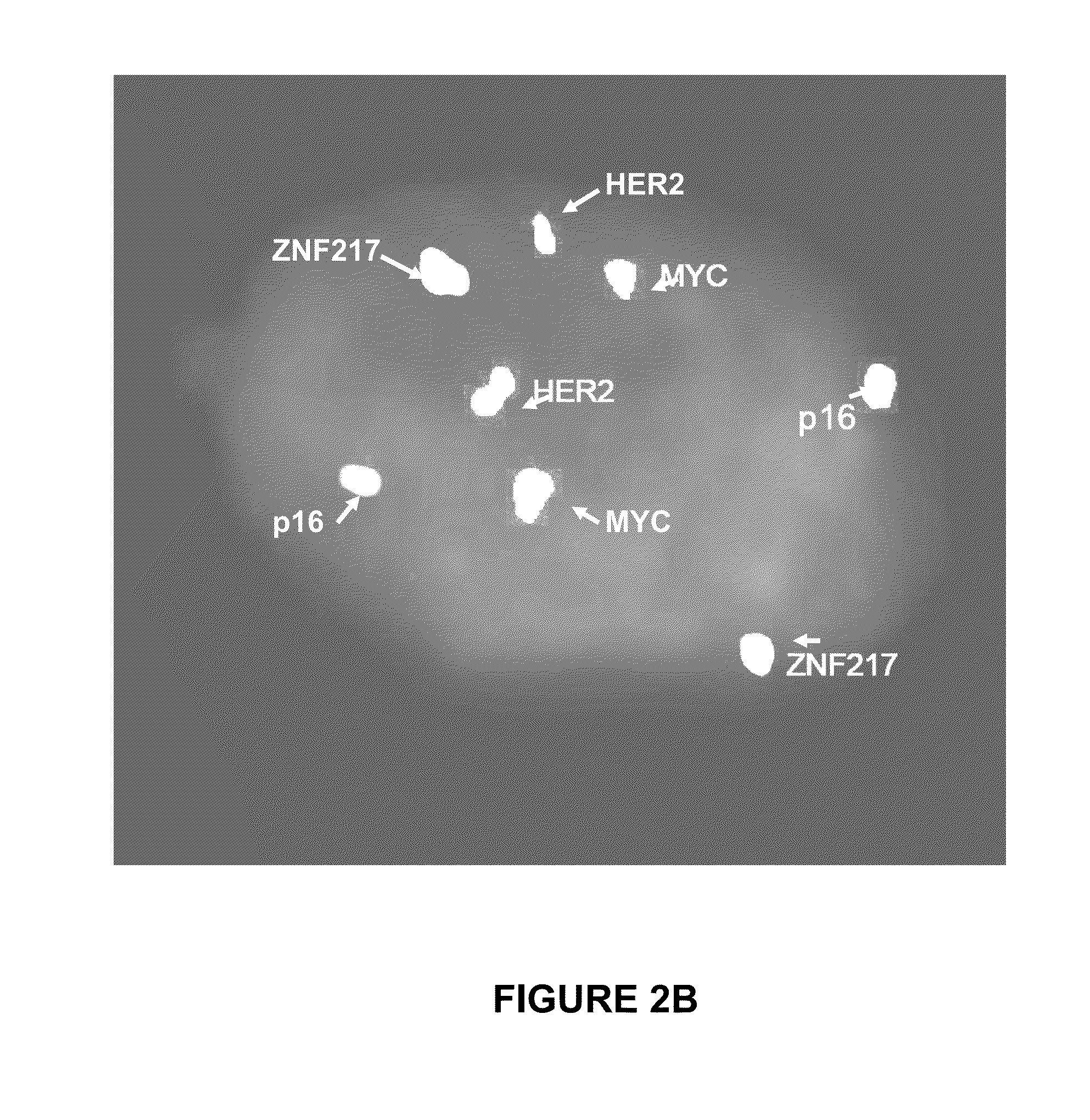Methods for early detection of esophageal cancer
a technology for esophageal cancer and early detection, applied in the field of methods for early detection of esophageal cancer, can solve the problems of overt cancerous growth, persistent genomic abnormalities in individual dividing cells, morphologic and genetic abnormalities, etc., and achieve the effect of sensitive high-throughput genomic analysis
- Summary
- Abstract
- Description
- Claims
- Application Information
AI Technical Summary
Benefits of technology
Problems solved by technology
Method used
Image
Examples
example 1
Ancillary Four-Probe FISH Test for Diagnosis of Esophageal Cancer
[0046]A FISH test based on the four genes: p16 gene (9p21) (SEQ ID NO. 49; Accession #AB049820), HER2 gene (17q12) (SEQ ID NO. 50; Accession # NM—131089), MYC gene (8q24 (SEQ ID NO. 51; Accession #M16261), and ZEN 217 gene (20q13.2) (SEQ ID NO. 52; Accession #NM—006526) was performed to classify cancer (high grade dysplasia / adenocarcinoma) vs. normal or intestinal metaplasia cells.
[0047]A step-wise algorithm was used to interpret ten different variables obtained from the FISH test to generate a classification for diagnosis. The algorithm was shown to represent a tool for putting each of these variables into its proper context for providing a diagnosis with a high degree of sensitivity (86%). The sensitivity in initial testing was 67%.
[0048]The algorithm used applies thresholds to variable values to generate a positive or negative indication was:
[0049]The specimens used for the FISH test consisted of esophageal brushing...
example 2
Pan Brushing of the Esophageal Mucosa
[0060]Pan-brushing of the entire esophageal mucosa of patients with BE was performed using a standard well develop protocol. Samples were collected and shipped for testing in PreservCyt fixative.
[0061]DNA was isolated from brushing samples using automated DNA extraction method. Sequencing was performed on all brushing samples using ILLUMINA® MISEQ® sequencing system Complete sequencing of the following genes was performed. The corresponding SEQ ID NOs and Genbank Accession Numbers are provided below each gene name, and sequence listings are provided herewith as well as being publicly available from The National Center for Biotechnology Information (NCBI) via the World Wide Web at ncbi.nlm.nih.gov, which information is incorporated herein by reference.
ABL1EGFRGNASMLH1(SEQ ID(SEQ ID(SEQ ID(SEQ IDNO. 1)NO. 2)NO. 3)NO. 4)M30833M38425NM_080426FJ940753RETAKT1ERBB2CSF1R(SEQ ID(SEQ ID(SEQ ID(SEQ IDNO. 5)NO. 6)NO. 7)NO. 8)Y12528AF283830M86910M33208HNF1AMP...
PUM
| Property | Measurement | Unit |
|---|---|---|
| fluorescence in situ hybridization | aaaaa | aaaaa |
| threshold | aaaaa | aaaaa |
| fluorescent in situ hybridization | aaaaa | aaaaa |
Abstract
Description
Claims
Application Information
 Login to View More
Login to View More - R&D
- Intellectual Property
- Life Sciences
- Materials
- Tech Scout
- Unparalleled Data Quality
- Higher Quality Content
- 60% Fewer Hallucinations
Browse by: Latest US Patents, China's latest patents, Technical Efficacy Thesaurus, Application Domain, Technology Topic, Popular Technical Reports.
© 2025 PatSnap. All rights reserved.Legal|Privacy policy|Modern Slavery Act Transparency Statement|Sitemap|About US| Contact US: help@patsnap.com



